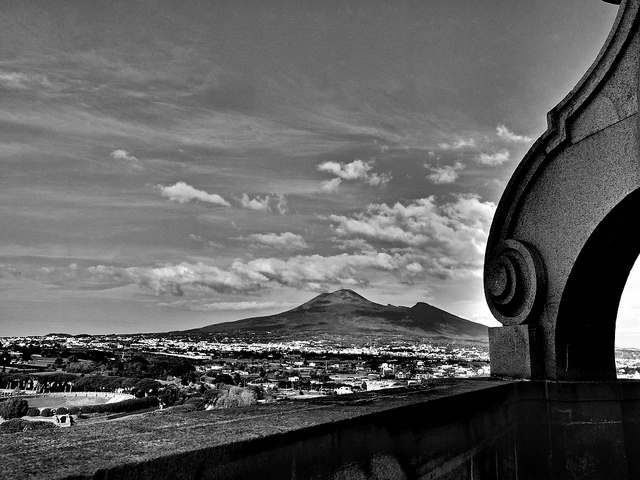Reading ancient Roman scrolls
Interview with
Roman scrolls burned and buried two thousand years ago when Mount Vesuvius  erupted are being read successfully by Italian scientists with a new technique that uses one of the brightest lights in the Universe, an X-ray synchrotron beam based in Grenoble, France. Science reporter Jonathan Webb has been taking a look at the story with Chris Smith...
erupted are being read successfully by Italian scientists with a new technique that uses one of the brightest lights in the Universe, an X-ray synchrotron beam based in Grenoble, France. Science reporter Jonathan Webb has been taking a look at the story with Chris Smith...
Jonathan - These were dug up a couple of centuries ago from Herculaneum which is sometimes called the other Pompeii. It's a village that was similarly buried by the eruption of Mt. Vesuvius in about 79 AD. But these scrolls were actually the only surviving library from those classical times. Tricky thing is working out what's inside them because as soon as you try and unroll them, they start to fall apart. There were various attempts to try and unroll them to varying degrees over the centuries but these were mostly given up about 20 years or so ago because people decided that it was just too risky. And just this week, a paper came out where physicists actually managed to use x-ray imaging to look inside one of these scrolls without having to unroll it. Now, they have even managed to work out what some of the letters were buried deep inside.
Chris - I've actually seen some of these scrolls because I've been fortunate to visit both Pompeii and Herculaneum and you can go to the Pompeii museum in Naples and these things literally look like a hunk of carbon. They are literally just charred remains. How on Earth can someone read that?
Jonathan - Yeah. It's an almost unimaginably tricky task. And you're right. They were entirely carbonised, completely burnt by a blast of gas that was about 300 degrees Celsius. And so, one of the main problems is that the stuff that is there in terms of a carbon based ink and a burnt piece of papyrus is actually really similar. There's not a lot of chemical difference between the writing and the paper if you like. So, the key thing here was that the technique that the scientists used was called x-ray phase contrast tomography which basically means, instead of just the light and the shadow cast by an x-ray going through the scroll, they were looking at tiny variations in the speed if you like, of the waves. They're actually able to see the 3D shape in an awful lot of detail. It was the tiny little bumps, literally, the little extra thickness that you get where there was ink as well as paper that let them start to unpick a few of the letters from deep inside one of the scrolls.
Chris - Does this mean then that you can effectively functionally unroll the scroll and read it eventually without actually having to unroll it?
Jonathan - That's the aim for sure and this is only really the sort of proof of concept. But the scientists would like to dedicate more time to this and get better at that unrolling process. It's really tricky to do all of that analysis though because not only is the scroll thousands of years old and burnt and rolled up, but it was also sort of squashed and mangled. So, those folds of paper are really in a sort of twisted as well as rolled up form. So actually, flattening it out using a computer and working out exactly what's there is a really demanding process. It involves quite a lot of guest work. So, the scientists have to work together with people who know their ancient Greek letters, to try and unpick exactly what's left there inside.
Chris - I've seen the paper that they're publishing and actually, the writing is quite nice. It's quite neat.
Jonathan - It seems to be quite neat, yeah. And it's interesting they can actually start to see individual sort of styles of the people who had done the writing. Oddly enough, even though we're obviously in ancient Rome here, the writing is mostly in Greek in this library and a lot of the texts seem to be epicurean. They're from one of the early followers of the philosopher Epicurus.
Chris - Have they got any gossip from ancient Rome yet off these scrolls or is it still early days?
Jonathan - Nothing particularly juicy just yet. At the moment, actually, it's only individual letters they've managed to pick out from within a scroll. But when they used a fragment that someone had already pulled off one of the other scrolls, they were able to use this technique to read complete words and start to put together sentences. So hopefully, as things progress and more time and effort goes in to improving the technique then we'll start to be able to actually read from beginning to end, what's on some of these things.
- Previous Magnetic Meteorites
- Next A final dash home










Comments
Add a comment